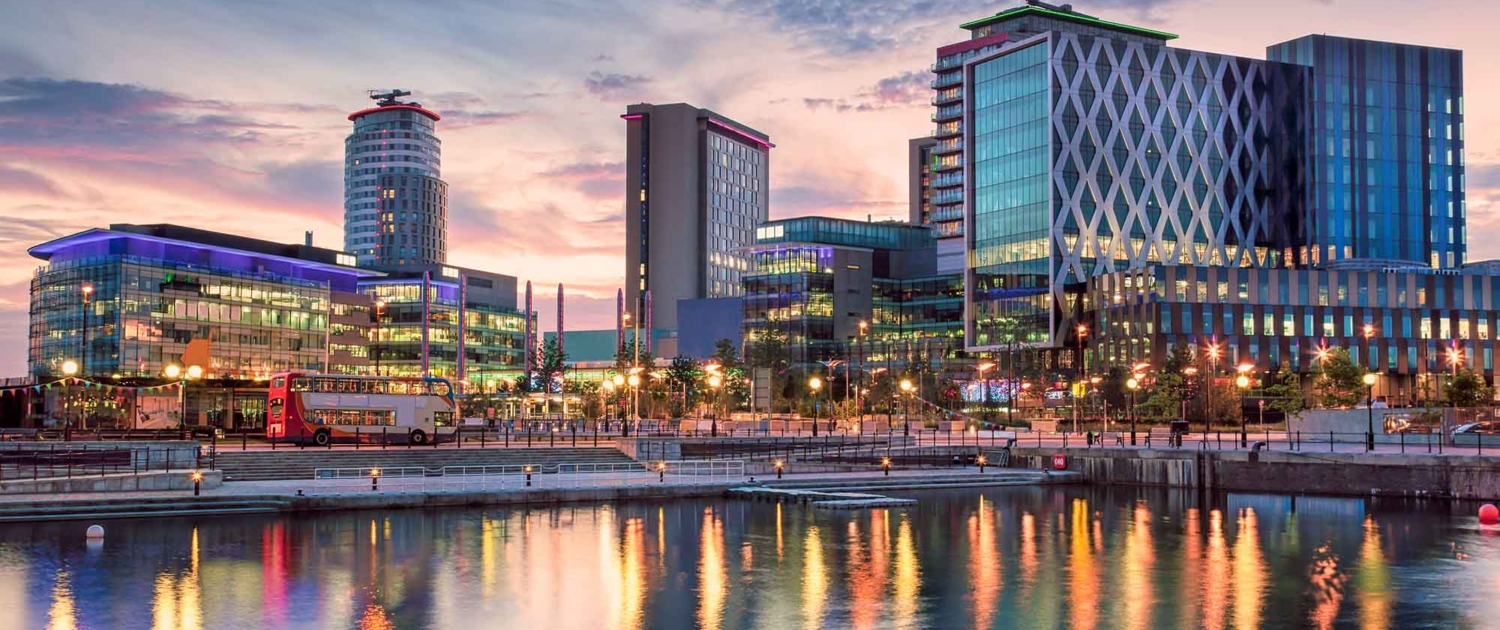Urban Regeneration in a Major UK City
Home > Manchester Case Study > A Case Study of Urban Regeneration in Manchester – Salford Quays
A Case Study of Urban Regeneration in Manchester – Salford Quays
Salford Quays is a waterfront area on the Manchester Ship Canal in Salford, Greater Manchester. It was previously the site of Manchester Docks and faces Trafford across the canal. The area faced severe decline when the docks ceased operations. Since then, the area has transformed into a vibrant commercial, residential, and cultural district through regeneration.
Why was the regeneration needed in Salford Quays?
The 1982 closure of Manchester Docks left Salford Quays largely deserted, with extensive unused land and abandoned infrastructure. This decline reflected broader economic shifts away from industrial activities in the UK. The focus of the regeneration was to boost the local economy and enhance residents’ quality of life.
What were the main features of the project?
The redevelopment plan for Salford Quays focused on revitalising the waterfront to support new commercial, residential, and leisure spaces. Significant road and transport links investments include extending the Metrolink tram system to improve connectivity with Manchester city centre and surrounding areas.
Cultural landmarks such as The Lowry—a theatre and gallery complex—and the Imperial War Museum North are crucial in redefining the area’s identity. These venues are important because they attract visitors and serve as community hubs.
Commercial and residential spaces proliferated, with numerous office buildings and housing developments constructed. BBC and ITV’s relocation of significant operations to MediaCityUK within Salford Quays attracted other businesses in the media and digital sectors, creating a vibrant employment hub.
Environmental improvements include investment in public spaces, walkways, and water features. Salford Quays’ redevelopment plan focused heavily on maintaining and enhancing the area’s waterfront, a significant natural feature.
A significant aspect of the redevelopment was including green spaces, parks, and recreational areas. These green spaces promote biodiversity and provide recreational opportunities for the community.
New buildings, including residential units, office spaces, and cultural venues, feature energy-efficient technologies, use sustainable materials, and are energy efficient. Some buildings have green roofs and energy-efficient glazing, contributing to a reduced carbon footprint.
How successful has the regeneration been in Salford Quays?
The regeneration significantly boosted the local economy by attracting investment, creating jobs, and increasing property values. Salford Quays is now a key part of Greater Manchester’s economic landscape, hosting diverse businesses.
Salford Quays has become a cultural and entertainment destination, hosting various cultural institutions and events that enhance the area’s vibrancy and appeal.
The development of residential areas alongside commercial and cultural venues has created a balanced urban community, offering improved lifestyle options for residents. The area’s amenities and green spaces contribute to a high quality of life.
While the project is hailed as a success, it has faced criticism because of concerns about rising property prices and living costs, raising issues about affordability and the displacement of existing communities. Additionally, some argue the benefits of regeneration have not been evenly distributed, highlighting the need for ongoing efforts to ensure inclusive growth.
Quiz
Related Topics
Use the images below to explore related GeoTopics.



